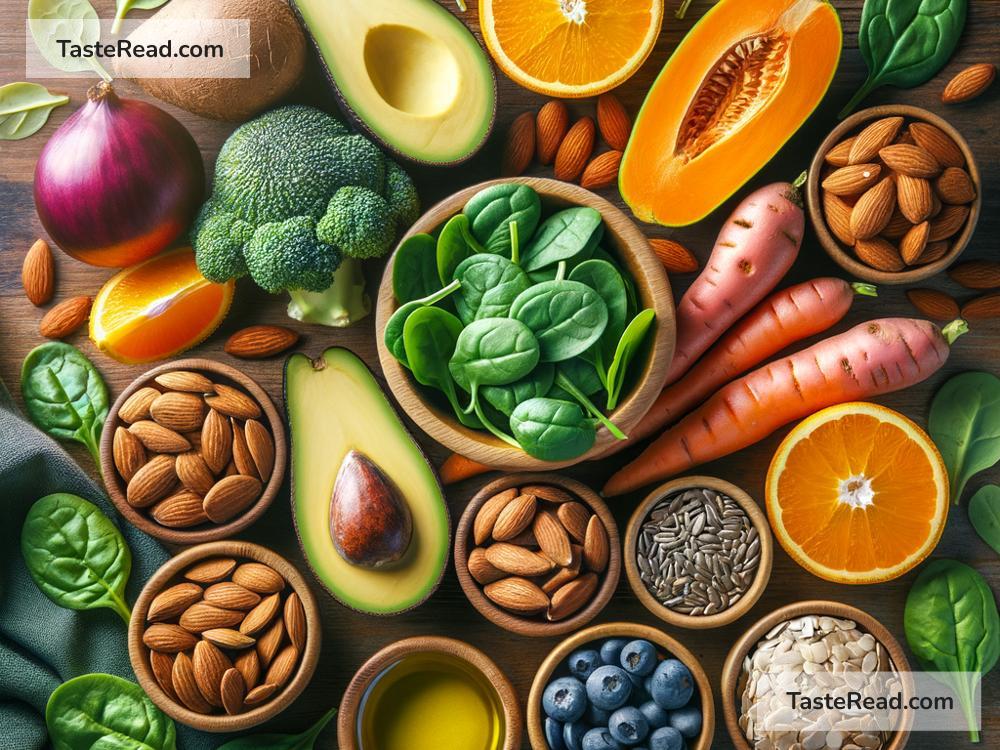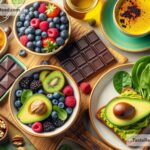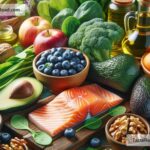Foods for Reducing Stretch Marks: A Natural Approach
Stretch marks are a common skin concern that can appear after rapid weight changes, pregnancy, or growth spurts. These marks occur when the skin stretches too quickly, causing the collagen and elastin fibers to break. While they are completely normal and harmless, some people may want to reduce their appearance for cosmetic reasons. While there is no magic food that will erase stretch marks instantly, eating a healthy diet can improve your skin’s health, elasticity, and ability to repair itself. Here’s a simple guide to foods that may help reduce stretch marks over time.
Why Diet Matters for Stretch Marks
The skin is your body’s largest organ and is highly affected by the nutrients you consume. For stretch marks, the focus should be on foods that promote collagen production, boost skin elasticity, and support hydration. Vitamins, minerals, antioxidants, and healthy fats are key players in maintaining smooth and healthy skin.
Top Foods to Help Fade Stretch Marks
1. Foods Rich in Vitamin C
Vitamin C is essential for the production of collagen, a protein that keeps your skin firm and elastic. It also helps repair damaged skin tissues and reduces inflammation. Incorporating vitamin C-rich foods into your diet may improve your skin’s ability to recover from stretch marks.
Examples of Vitamin C-rich foods:
– Oranges and other citrus fruits (lemons, limes, grapefruits)
– Strawberries
– Kiwi
– Bell peppers
– Pineapples
Tip: Snack on fresh fruits or add them to smoothies to get a dose of vitamin C every day.
2. Foods High in Zinc
Zinc plays a vital role in skin repair and regeneration. It also helps maintain healthy collagen levels and accelerates wound healing, making it especially beneficial for reducing stretch marks over time.
Examples of Zinc-rich foods:
– Nuts and seeds (pumpkin seeds, sunflower seeds)
– Lentils
– Chickpeas
– Whole grains (quinoa, oats)
– Lean meats and seafood (especially oysters)
Tip: Sprinkle seeds on salads or add lentils to your soups to make your meals more zinc-friendly.
3. Omega-3 Fatty Acids
Omega-3 fatty acids are healthy fats that moisturize your skin from the inside out. They help reduce inflammation, keep skin supple, and improve its elasticity. Healthy, elastic skin is less likely to develop stretch marks.
Examples of Omega-3-rich foods:
– Fatty fish (salmon, mackerel, sardines)
– Chia seeds
– Flaxseeds
– Walnuts
– Avocados
Tip: Try baking salmon for dinner or adding chia seeds to your yogurt or smoothies.
4. Foods Full of Vitamin E
Vitamin E is a powerful antioxidant that protects your skin from free radicals. It also supports skin hydration and repair, which can help stretch marks fade faster.
Examples of Vitamin E-rich foods:
– Almonds
– Sunflower seeds
– Spinach
– Broccoli
– Avocado
Tip: Snack on a handful of almonds or whip up an avocado toast for an easy vitamin E boost.
5. Protein-Packed Foods
Protein is the building block of collagen, elastin, and other skin-supporting components. Consuming protein regularly helps your body repair and strengthen your skin. Aim to include lean proteins in your meals to promote healthy skin.
Examples of protein-rich foods:
– Eggs
– Lean poultry (chicken, turkey)
– Fish
– Tofu
– Beans and lentils
Tip: Try a protein-packed stir fry with chicken and vegetables for a balanced, skin-supporting meal.
6. Hydrating Foods
Hydration is critical for your skin’s overall health. Eating foods with high water content can help keep your skin plump and elastic. Proper hydration prevents dryness and reduces the likelihood of further skin tearing.
Examples of hydrating foods:
– Cucumbers
– Watermelon
– Celery
– Spinach
– Tomatoes
Tip: Increase your water intake alongside eating these water-rich foods for maximum hydration benefits.
7. Foods with Antioxidants
Antioxidants combat skin damage caused by free radicals, helping your skin heal and regenerate. Eating a colorful array of fruits and vegetables ensures you’re getting a variety of antioxidants that benefit your skin.
Examples of antioxidant-rich foods:
– Blueberries
– Raspberries
– Kale
– Sweet potatoes
– Green tea
Tip: Start your morning with a cup of green tea and a bowl of berries for a healthy antioxidant boost.
Additional Tips for Healthier Skin
While eating the right foods is an excellent first step in reducing stretch marks, there are other lifestyle changes that can support the process:
1. Stay hydrated: Drink plenty of water throughout the day to keep your skin moisturized and elastic.
2. Exercise regularly: Physical activity improves blood circulation, helping your skin repair faster.
3. Use natural oils: Coconut oil, almond oil, and shea butter can be applied topically to hydrate your skin and nourish it.
4. Be patient: Reducing stretch marks takes time, so stick with a healthy diet and self-care routine.
Conclusion
While stretch marks are completely normal and a natural part of life, you can reduce their appearance by eating nutrient-rich foods that support skin health. Add vitamin C-rich fruits, zinc-packed seeds, omega-3 fats, healthy proteins, and antioxidant-loaded vegetables to your diet to help your skin repair itself. Combined with good hydration and a consistent skincare routine, these foods can make a noticeable difference over time. Remember, your body deserves care, love, and nourishment—stretch marks are simply a little reminder of how amazing it is!


